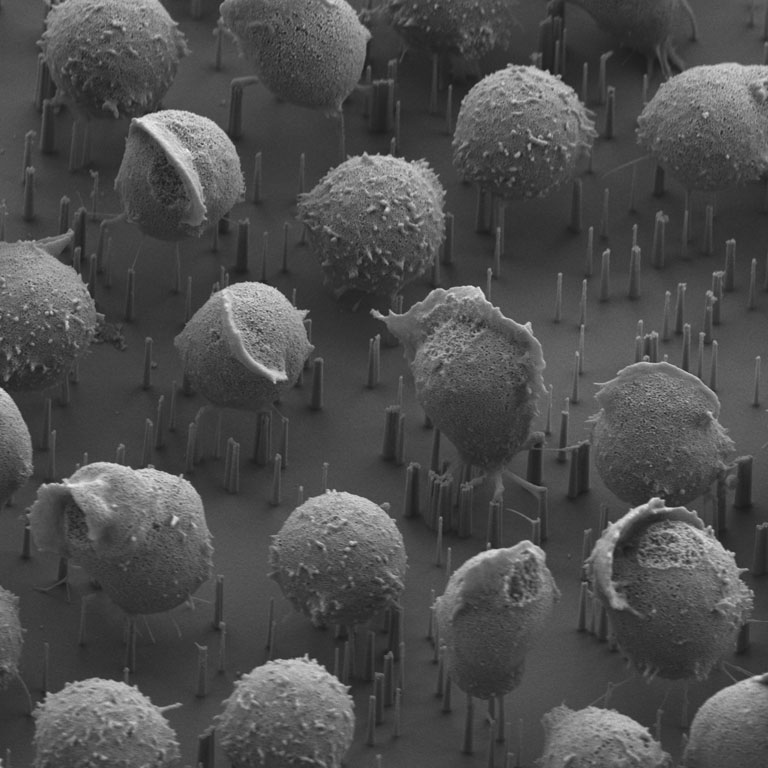When Professor Hongkun Park from Harvard visited the sister Kavli institute in Delft last week, Delta had the opportunity to ask him about a remarkable instrument he developed: a nail bed for cells.
When Park became a full professor at Harvard in 2004, he decided to move into biology, much like the Delft Professor Cees Dekker had earlier. Park was intrigued by the fact that you can put together nonliving things like proteins, RNA, DNA and other stuff into a cell that is clearly alive.
With nanotechnology he developed nano needles about five microns long and half a micrometer across that are fixed vertically on a substrate. When his researchers put living cells on a nail bed, they found out that cells do not seem to mind being punctured as long as the needles are small and sharp enough. The nail bed provided Park’s team with a unique instrument to inject stuff into cells and see what happens. That’s what they did in a Nature paper on T-cells. Or they used the needles as a fishing pole to pull things out of a cell. Lately, they’ve been using nano needles as electrodes for brain cells.
Park says, “Basically, the brain is a complicated organ with lots of interconnected neurons that are talking to each other. There are lots of theories on this communication, but the tools that can proof these communications are lacking. There are lots of probes out there, but we thought that nano needles would be a good tool to interrogate neurons. In the first demonstration paper that we published in Nature Nanotechnology we built nano neurobeds that could be coupled to some sixteen neurons. Nowadays we build an entire computer chip which has 250,000 recording sites – each site having a needle bed, so that we can talk to millions of neurons at the same time. We try to connect it to hundreds of thousands of brain cells at the same time. But that’s only the beginning. What we are building is essentially a camera chip. We have a bunch of different pixels on the computer chip. We’re using the pixels NOT to detect light as in a camera, but to detect electrical activity of neurons as measured by the needles. The device covers about a centimetre square.”


So that gives you the insight of one cm2 of brain activity. Can you make sense of those signals?
“Not yet. We’re working hard on that.”
Does it look like noise?
“It’s not exactly noise. But as yet we do not have the machineries or languages top understand the signals in a detailed way. We are collaborating with theorists to understand those things much better.”
Are you planning to scale up this approach?
“Yes. We are working with people at MIT to make a deep probe that will allow us to go deep inside the brain which we will then apply to mice and rats. There are lots of different things you can do once you have new tools.”
A philosophical question, do you think people are smart enough to understand their own brain?
“I don’t know. To understand how we think is one thing, but once we learn how to communicate with a brain cell in an efficient and non-invasive way, there might be lots of things you can do in terms of neurological diseases. Simple stimulation might help to understand which connections are broken. Suppose you have spinal cord injury and we could make a chip that can interface with one part of the spinal cord and make a connection to the other part. There are lots of amazing things you might be able to do. And eventually one day we might have a better picture of how our brain works.”
people.fas.harvard.edu/~parklab



Comments are closed.